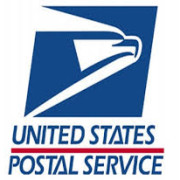Are USPS’ Bottom Line Improvements Really On the Way?
For years now, (certainly too many to recall), we have been hearing about the financial woes of the United States Postal Service, (USPS). And, from what we have heard the news has never provided any hope that things would actually change for the better, except maybe until now.
You see, the new Postmaster General, logistics veteran Louis DeJoy, is committed to making positive changes at the USPS with a goal towards reducing long time deficits and hopefully even making a profit at some point in the not-to-distant future.
The USPS has struggled for a very long time with continued declining volumes of First Class and Marketing Mail wreaking havoc on USPS revenues. More impactful however is the USPS’ almost $34 Billion retiree health benefit pre-funding obligation, which it actually defaulted on from 2012 through 2016. It’s a deep financial hole the USPS may never be able to fully recover from.
In order to overcome the continued poor financial conditions at the USPS, it will require a combination of strong cost cutting initiatives, along with implementing improved revenue generating policies the USPS can count on today and well into the future.
It’s important to remember that on one side of the coin the USPS partners with the leading industry logistics service providers such as Amazon, FedEx and UPS as major global package delivery services. And, on the other side of the coin, they actually compete with those same industry leaders for their share of business.
With the tremendous growth of on-line shopping dramatically ramping up the need for residential deliveries growing as a result of the Covid-19 crisis, the USPS’ delivery services are in a good position to grow exponentially but only if proper operational and sound financial structures are in place. And, this trend will continue long after the world gets back to normal, whatever that actually turns out to be.
So, placing logistics expert, Louis DeJoy with over 35 years of industry experience at the helm of the US Postal Service is exactly what the doctor ordered and extremely timely. Mr. DeJoy’s experience had him working in concert with such mega firms as Disney, Boeing, Verizon, United Technologies, not to mention working closely with the USPS. That’s experience that can go a long way in the postal service’s goal towards improving the agency’s bottom line profitability.
There are several areas on the Postmaster General’s radar screen, but perhaps none more revealing than the fact that Mr. DeJoy wants USPS staff to “leave mail behind at distribution centers if it delayed letter carriers from their route.” This is the exact opposite of what has been Standard Operating Procedure at USPS, requiring postal workers not to leave mail behind and to make multiple delivery trips to deliver all the mail, if necessary.
By making multiple trips to deliver all of the mail and packages that are available for delivery, USPS projects that it costs upwards of $200 Million annually in increased costs. The focus will now be on addressing what is causing those delays in the hopes of making necessary adjustments to improve the process.
Other cost-cutting measures being discussed include, prohibiting overtime and cutting down on measures currently employed by local postmasters of augmenting local staffing issues.
These issues, if the USPS was managed in a purely business environment, would probably have been attacked many years ago and cost reduction efforts would be part of an ongoing process to assure profitability. In our opinion, the USPS must be managed just as any other business is managed in today’s fast-paced business environment.
Having said that, we fully understand the challenges the USPS faces and clearly its needs are extremely complex. It will take much time to achieve many of these cost efficiencies, however with Mr. DeJoy at the helm we should start to see these improvements taking effect in the not-to-distant future; at least we hope that’s the case!
To help the Postmaster General with his operational improvement and cost reduction efforts, the Department of the Treasury recently reached an agreement with USPS to provide up to a $10 Billion loan under provisions of the Cares Act. USPS would have usage of the loan proceeds for operating expenses if USPS determines that due to the Covid-19 emergency, it will not be able to fund operating expenses without borrowing money.
The loan availability, as well as the processes the Postmaster General has identified as critical issues to attack first, should go a long way towards assisting the USPS in its efforts towards attaining profitability. Let’s at least hope that’s what it does.
Interested in reading more about USPS? Check out the latest disruptions and resumptions due to the Covid-19 crisis and learn about its Priority Mail Suspensions





